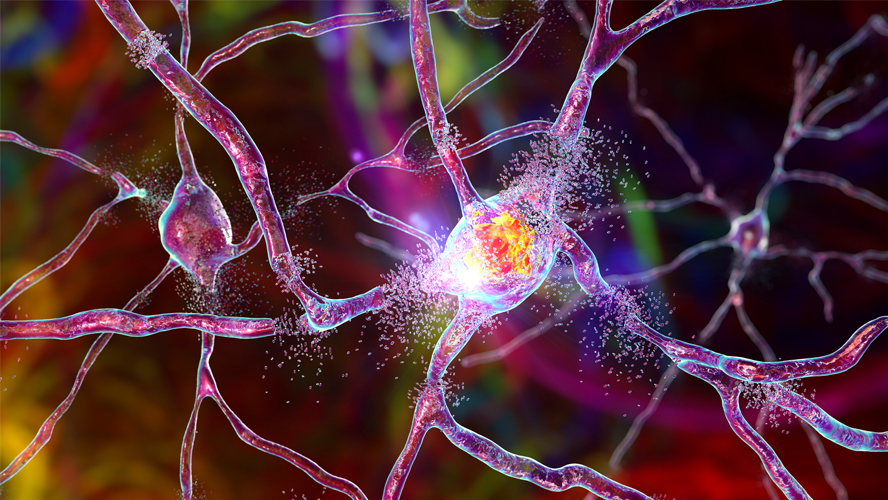
Researchers at UHN’s Donald K. Johnson Eye Institute (DKJEI) have shed light on the molecular processes underlying the neuroprotective effects of lipoxins, paving the way for novel therapies for neurodegenerative diseases.
Lipoxins are small lipid molecules that are known to protect the nervous system from damage caused by inflammation.
DKJEI Senior Scientist Dr. Jeremy Sivak previously discovered that these molecules are produced in the retina—the neural tissue that lines the back of the eye—and showed that they protect neurons in an experimental model of retinal degeneration.
“An important step towards using lipoxins as targeted treatments for neurodegenerative diseases is determining how they protect against excessive inflammation,” explains Dr. Sivak, the senior author of the study.
Dr. Sivak’s team set out to determine the mechanisms by which two lipoxins dampen inflammation using an experimental model of posterior uveitis—retinal inflammation which can cause vision loss.
"We were particularly interested in how lipoxins interact with glial cells, which are critical for maintaining the immune response in the nervous system,” explains Dr. Izhar Livne-Bar, a research associate in Dr. Sivak’s lab and the first author of the study.
The team discovered that the lipoxins act on glial cells—namely astrocytes and microglia—to interrupt a cascade of cellular events that drive inflammation.
The lipoxins reduced retinal cells’ production of key signalling proteins called chemokines and cytokines, which typically initiate inflammatory processes.
Interestingly, the glial cell changes initiated by lipoxins depended on when they were administered—before or after the onset of inflammation. When lipoxins were delivered before the onset of inflammation, they primarily reduced the activity of astrocytes and initiated anti-inflammatory processes. In contrast, when they were delivered after inflammation began, they primarily reduced microglia activation and initiated processes that resolved the inflammation.
This finding prompts further investigations, as it has implications for developing lipoxin-based treatments for neurodegeneration.
“Discovering how lipoxins are involved in distinct processes that prevent and resolve inflammation brings us a step closer to determining how we can translate the actions of these molecules as treatments for a wide range of neurodegenerative diseases,” concludes Dr. Livne-Bar.
This work was supported by the Canadian Institutes of Health Research, the National Institutes of Health, and UHN Foundation. Dr. Jeremy Sivak holds the Graham Trope Chair in Glaucoma Research and is an Associate Professor in the Department of Ophthalmology and Vision Sciences at the University of Toronto.
Drs. Izhar Livne-Bar and Jeremy Sivak hold a US patent for the use of lipoxins to treat neurodegeneration.
Livne-Bar I, Maurya S, Gronert K, Sivak JM. Lipoxins A4 and B4 inhibit glial cell activation via CXCR3 signaling in acute retinal neuroinflammation. J Neuroinflammation. 2024 Jan 11. doi: 10.1186/s12974-024-03010-0.

Inflammation is a critical part of our body’s innate immune response; however, excessive inflammation can cause cell degeneration and lasting tissue damage. Inflammation is a common feature of many neurodegenerative diseases, including glaucoma, Alzheimer disease and multiple sclerosis.

